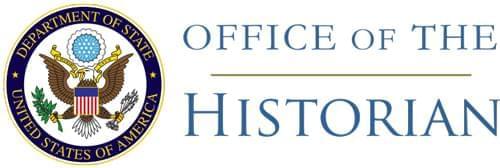337. Notes from transcripts of JCS meetings, October 191
NOTES TAKEN FROM TRANSCRIPTS OF MEETINGS OF THE JOINT CHIEFS OF STAFF, OCTOBER–NOVEMBER 1962, DEALING WITH THE CUBAN MISSILE CRISIS(Handwritten notes were made in 1976 and typed in 1993.)
CJCS: Chairman, Joint Chiefs of Staff. General Maxwell D. Taylor, USA.
CSA: Chief of Staff, Army. General Earle G. Wheeler.
CSAF: Chief of Staff, Air Force. General Curtis E. LeMay.
CNO: Chief of Naval Operations. Admiral George W. Anderson, Jr.
CMC: Commandant, Marine Corps. General David M. Shoup.
CONAD: Continental Air Defense
DIA: Defense Intelligence Agency
DJS: Director, Joint Staff
LANT: Atlantic
NORAD: North American Air Defense
OAS: Organization of American States
RCT: Regimental Combat Team
SAM: Surface-to-Air Missile
TAC: Tactical Air Command
[Facsimile Page 2]Friday, 19 October
JCS meeting at 0900:
CJCS gives a debrief of White House meeting on the previous evening: The tendency is more and more toward political actions plus a blockade; the President shows a preference for this. State will provide the details of political approaches. The JCS will consider total blockade, selective blockade, and the [Facsimile Page 3] [illegible in the original] for a declaration of war. State’s idea is that there should be a selective blockade for offensive weapons [illegible in the original]. CSAF: It would be sure disaster to try that. CJCS: The President wants to see us this morning. [illegible in the original] between Course E (above) and the new [illegible in the original] act as plus blockade. We should recommend to [illegible in the original] attack on comprehensive targets, (2) reconnaissance surveillance and (3) complete blockade. A briefing was given by DIA: There are 35–36 MIG 21s and 21 (17 still in crates). [illegible in the original] There are 7 MRBM sites (4 are for SS–4s with 1100 n.m. [Typeset Page 1078] range: 3 are for SS–5s with 2200 n.m. range); there are 16 launchers for SS–4s and 12 for SS–5s, with two missiles each. There are 22 SAM sites, 9 believed operational. In just a few weeks, they can have a couple of air defense nets with rest capability.
The JCS position decided upon for the meeting with the President was:
1. Notify Macmillian and possibly Adenauer two hours in advance.
2. Carry out a surprise attack on comprehensive targets.
3. Reconnaissance surveillance.
4. Complete blockade.
5. Trade Cuba? CSA, CSAF and CNO say yes: CJCS says only be prepared to do so.
6. Realize there will be a [illegible in the original] upon and NATO and problems about Berlin.
JCS meeting at 1400:
[illegible in the original] meeting at the State Dept. that morning. R. Kennedy thought we should say nothing but simply [Facsimile Page 4] go ahead and make that attack and then go to the OAS. State said that we could never get two-thirds approval from the OAS unless we went to it first. CJCS says that conferees split into two teams to prepare their cases: Red team favoring blockade. Blue team favoring attack. The Blue Team consisted of R. Kennedy, Douglas Dillon, McGeorge Bundy, Dean Acheson, and John McCone.
CJCS related that R. Kennedy said that from here on out, if we make a surprise attack, we will be accused of another Pearl Harbor. So would you be willing to accept a 24-hour delay in order to inform the allies? CSAF and CNO said yes; CJCS agreed with them.
- CJCS summarized previous evening’s meeting at the White House on reaction to photographic pictures of Cuban missile sites in Cuba; JCS position for meeting with the President; debrief on morning meeting at the State Department. Secret. 4 pp. DOD, Office of the Chairman of the Joint Chiefs of Staff, Office of Joint History.↩
